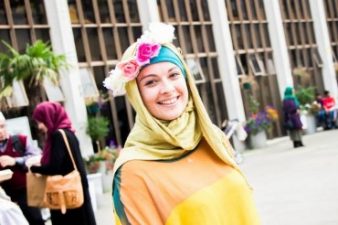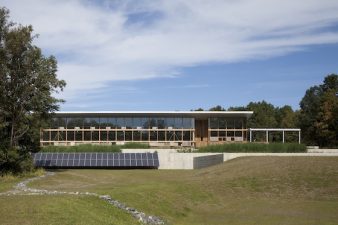From luxury architecture in Mecca to the blinged-out buildings of Dubai, it seems that Islamic architecture is all about opulence and grandeur. The bigger and the more lavish- the better but it hasn’t always been like this. In the past, Islamic architecture relied on natural materials and some of the most iconic Islamic buildings were ones of simplicity and modesty– think the Kaaba in Mecca. Mud was something that was heartily used and architecture sought to reflect the environment rather than to outshine it. Today, the renowned architect Ibrahim Mohammed Jaidah states that the fading green credentials of Islamic architecture are in need of revival.
The Qatar Green Buildings Council (QGBC)- which promotes green architecture for the health of the environment, people and economic security- hosted a lecture to explore environmentally friendly Islamic architecture in the region over the weekend. Although the QGBC is a growing green building council with more than 90 companies and individuals as members, the lack of environmentally-friendly Islamic architecture was hard to ignore.
Losing Touch With Islamic Principles of Moderation
Ibrahim Mohammed Jaidah, a renowned Qatari architect, told the Peninsula Qatar that “the new developments in Islamic cities don’t reflect the Islamic art of architecture as it was in the past.” He explained that ancient Islamic cities were built on principles of simplicity, they were economical and environmentally friendly in line with Islamic teachings: “Kaaba, the first building chosen by Ibrahim was reflecting the simplicity of Islamic architecture.”
Today things are very different. Many Gulf states seem in race to build the ‘most lavish’, ‘the tallest’, ‘the most expensive’ building with ecological credentials and Islamic principles of moderation taking a back seat. Even in Mecca, the centre of the Islamic faith which Muslims face when they pray, criticism were made of the latest architectural addition which came in the shape of the ‘Royal Mecca Clock Tower’. A massive building towering over the Kaaba, it appears to be nothing but a Big Ben rip-off with a massive shopping mall, a 800-room hotel as well as large prayer halls for the pilgrims. A slapdash effort has been made to incorporate Islamic architecture which amounts to nothing more than a crescent on top of a spire and Arabic numerals.
What Would The Prophet Do?
It’s time that the quest for gimmicky world records came to an end, replaced by a renewed recognition of the more sustainable tradition of Islamic architecture. I have previously written about the epic mud structures of the Muslim world such as the Great Mosque of Djenne in Mali, the ‘Manhattan of the Desert’ in Yemen and the Bam citadel of Iran. These mud structures,which are incredibly durable and environmentally friendly, show that Muslim architecture can be kind to the planet. In fact, the Prophet Muhammed (pbuh) was said to have prayed in a mosque made out mud bricks and palm trunks which would have incurred minimal waste and harm to the environment. So if mud and palm trunks are good enough for the prophet, why aren’t they good enough for us?
:: Image via Wolfgang Staudt on Flickr.
For more on Islamic green architecture:
Luxury Architecture In Mecca: Has Hajj Lost Its Egalitarian Spirit?
Mud Structures In The Muslim World: Spectacular & Sustainable
Cambridge To Build Europe’s First Eco-Mosque




May I suggest you check out this weeks Archnet update, which celebrates environmental design in Muslim Societies. archnet.org In particular, you might want to visit the environmental design collection at http://archnet.org/collections/800 and the journal “Environmental Design: Journal of the Islamic Environmental Design Research Centre” at http://archnet.org/collections/37
iam so pleased to read this article.Being an architect myself,and having a great passion for green architecture,i totally agree with you.
yes,moving forward into the future realistically we see that our natural resourses are exhausting at a very rapid pace and its time we give back to our planet by having sustainable architecture.
I really loved the last question……if we truly are creative ,we can have clean beautiful architecture even with simple available local materials.”Innovation” is the word!!
(PS:the clock tower is horrendous.)
Re: “So if mud and palm trunks are good enough for the prophet, why aren’t they good enough for us?” – amen! It seems by going all bling we’re not behaving as if Prophet PBUH is our EXAMPLE … to FOLLOW, but like some kind of extremist football fans almost which treats its main players like celebrities (in a not truly Islamic sense)… sorry not able to get my words right tonight… trying to say we should move forward (not ‘back’ as that may be perceived as ‘retrograde’) by reinterpreting the ESSENCE of what Prophet PBUH stood for, not just pious-looking facade. My 2p (and God knows best). In peace, Rianne
Good questions! And not just for the Muslim world. I’m pleased to read that McMansions are also no longer so appealing in the US.